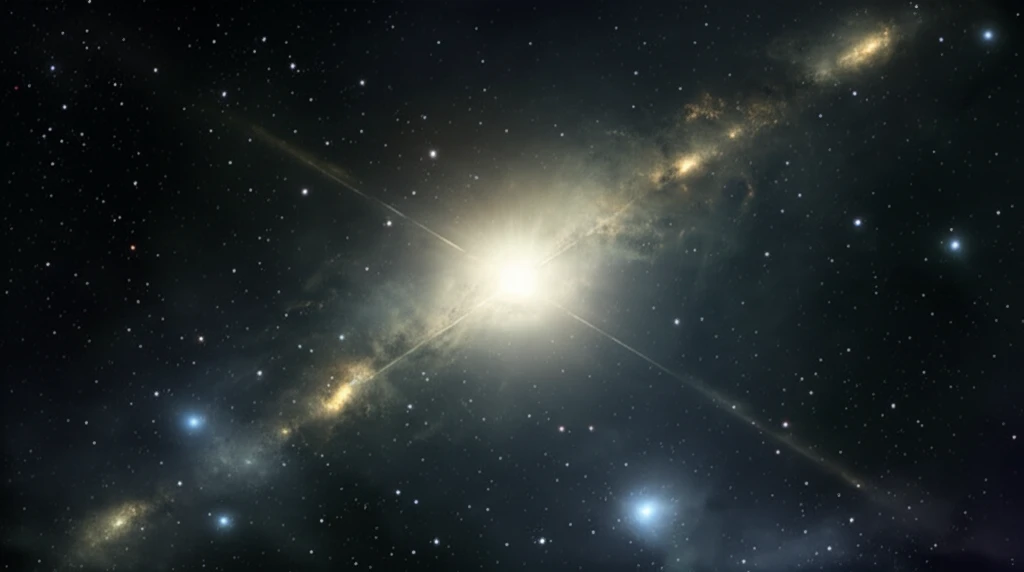
Unveiling the Secrets of Star Birth: How Massive Stars Influence Their Cosmic Neighborhood
"A Deep Dive into the NGC 7538 Region and Its Stellar Contents"
In the vast expanse of the cosmos, the birth of stars is a captivating dance of gravity, gas, and dust. While the general process of star formation is understood, the specific mechanisms that trigger and regulate it in different environments remain an area of active research. One crucial element in this cosmic choreography is the influence of massive stars, whose powerful radiation and stellar winds can dramatically impact their surroundings, either fostering or hindering the birth of new stellar generations.
Massive stars, with their immense energy output, carve out vast bubbles in the interstellar medium, creating dynamic environments known as HII regions. These regions are characterized by ionized hydrogen gas, illuminated by the intense radiation from the central massive stars. The expansion of these bubbles can sweep up surrounding material, potentially triggering the formation of new stars in the compressed gas clouds along their edges. However, the same radiation and winds can also disperse and disrupt these clouds, inhibiting further star formation.
To unravel the complexities of this interplay, astronomers turn to detailed studies of specific star-forming regions. The NGC 7538 region, a prominent HII region located approximately 2.65 kiloparsecs away in the Perseus spiral arm of our galaxy, offers a rich environment for investigating the influence of massive stars on their natal surroundings. This region harbors a diverse population of young stellar objects (YSOs), stars in various stages of formation, as well as several massive stars, including the O3V-type star IRS 6, making it an ideal laboratory for studying triggered star formation.
How Do Astronomers Study Star Formation in Regions Like NGC 7538?

The study leverages a combination of deep optical photometric data and archival data from Chandra (X-ray), 2MASS (near-infrared), and Spitzer (mid-infrared) surveys. This multi-wavelength approach allows astronomers to identify and characterize YSOs, even those that don't show the typical infrared excess emission associated with young stars still embedded in their natal clouds. By analyzing the spatial distribution and properties of these YSOs, researchers can piece together the star-formation history of the region and assess the impact of massive stars like IRS 6.
- Deep optical photometric data obtained with the 104-cm Sampurnanand telescope at the Aryabhatta Research Institute of Observational Sciences (ARIES), Nainital, India.
- Archival data from the Chandra X-ray Observatory, providing information on the X-ray emission from YSOs.
- Data from the Two Micron All Sky Survey (2MASS), capturing near-infrared emission.
- Data from the Spitzer Space Telescope, covering mid-infrared wavelengths.
What Does This Mean for Our Understanding of the Cosmos?
This detailed study of the NGC 7538 region provides valuable insights into the complex interplay between massive stars and star formation. By combining multi-wavelength observations and detailed analysis, astronomers are able to paint a more complete picture of the processes that shape the birth of stars in diverse environments. These findings contribute to our broader understanding of the formation and evolution of galaxies, and the ongoing cycle of star birth and death that enriches the cosmos.
